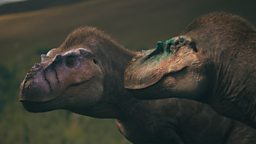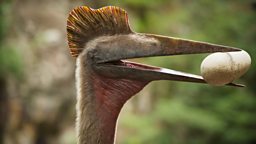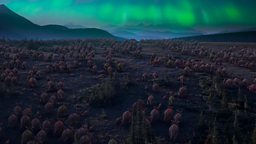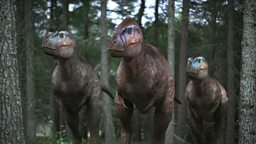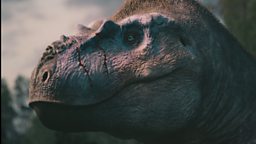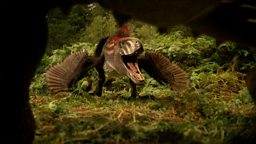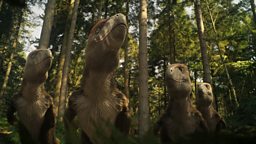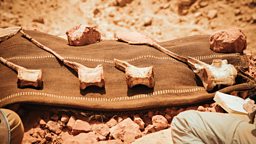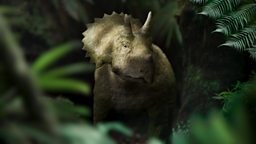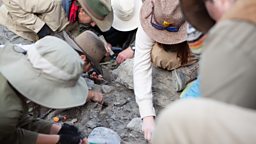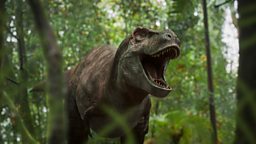Dino guide: Creating T. rex and Triceratops
by Jay Balamurugan, series assistant producer
In The Orphan, Clover the baby Triceratops must learn to survive in a world dominated by the most infamous apex predator in all of Earth’s history – Tyrannosaurus rex.
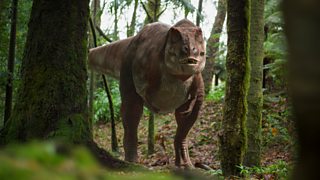
Bringing T. rex to life was a unique challenge. The tyrant king is one of the most studied dinosaurs, and therefore, one of the best understood. Yet, there are still many gaps in our knowledge. Was T. rex feathered? What colour was it? Did it have flashy display features? Or was it a muted, camouflaged creature?
Recently, it has become quite fashionable to depict T. rex with a good deal of feathering. We now know that feathers are ancestral to all dinosaurs, meaning the ancestors of the king of the dinosaurs likely sported fuzzy coats. However, interestingly enough, we don’t actually have any evidence of T. rex itself being fluffy. We do, however, have evidence of skin, in the form of scale impressions from parts of the back half of the body.
Scientists now think that there may have been an upper limit of size where feathers stop being particularly useful – and predators don’t come much bigger than Tyrannosaurus rex. It is looking more likely that T. rex started life as fuzzy hatchlings, and over time, grew out of their downy coats. Considering our on-screen T. rex is fully grown, we chose to depict it true to the latest science and leave it featherless. Instead, it is covered in tiny scales, and on its face, toughened skin, and hard, keratin-covered horns and bumps.
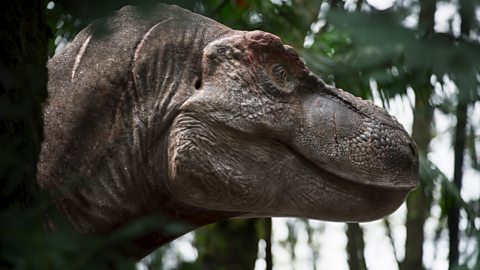
The Tyrannosaurus rex
Clover, the young Triceratops has her first terrifying encounter with a t-rex.
To design the colour scheme for our Tyrannosaurus, we turned to modern animals for inspiration – large predatory birds, reptiles, and mammals. We experimented with shades of mottled rusty browns, reds, and blacks, punctuated by a stark white underside.
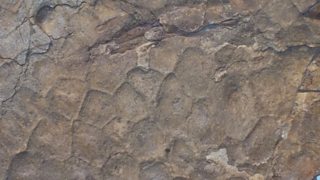
We applied the most vivid red colouration above the eyes, where our T. rex has larger projecting eyebrow horns – something scientists think it used to show off to rivals or potential mates. The result was an animal that felt unique and impressive, yet naturalistic and true-to-life. An apex predator unlike any other.
To survive an encounter with such a foe, Clover needs allies – and an adult Triceratops will do just fine. Like T. rex, the three-horned Triceratops is among the most iconic of the dinosaurs, and one of the most studied. In fact, more adult Triceratops are found than any other dinosaur in the region.
What this has meant is that there is, quite literally, tonnes of fossil material to reference when designing our animal. Not only do we have fossil bones from the entire skeleton, we have fossilized skin impressions – showing that Triceratops had massive polygonal scales the size of an open palm, interspersed with even bigger scales with spike-like protuberances.
When designing dinosaurs, this kind of fossil evidence is a dream come true – it means that we can match the skin of our VFX dinosaur exactly to that of the living animal. Despite this, there are certain things we still don’t know – and one of the big unknowns is colour.
Scientists are increasingly sure that the giant, two-metre-wide frill of Triceratops was used for display; a giant banner to say ‘Look at me!’, or perhaps, ‘Back off!’. The abundance of blood vessels running through the fossilised frills has also led scientists to propose an interesting theory. As palaeontologist Eric Lund says in the film ‘The idea is they could change the colour pattern of their frill, flash these different colours.’
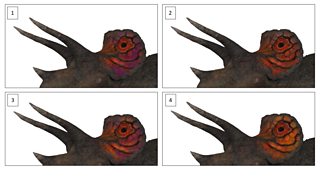
This idea isn’t without merit – many modern animals use colour in extraordinary ways to send a message. The ability to flush blood to specific parts of the body to create vibrant displays is seen in birds – modern dinosaurs themselves. Ostriches flush their throat pouches to turn them bright pink, and the Crested Caracara does the same to its face, turning it a deep orange. Many reptiles can also change colours in response to threat, such a bearded dragons and most famously, chameleons.
Putting all this together, we designed a look for our Triceratops’ frill that incorporated vivid reds, purples, and oranges, in the shape of two enormous eye-spots – making Triceratops look even bigger and more threatening. Enough to scare off even the king of the dinosaurs.
Looks like Clover has chosen well.
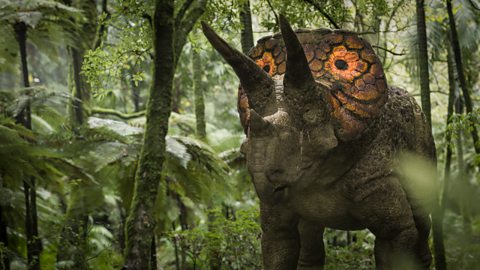
Tyrannosaurus rex vs Triceratops
Triceratops reveals amazing defensive trick in deadly battle with T.rex
